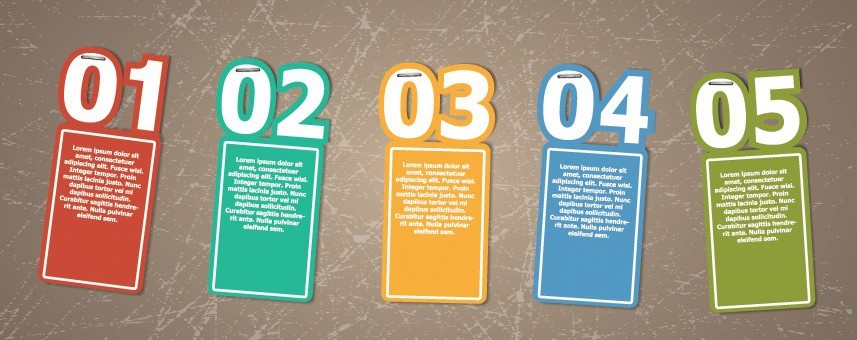Video tutorial: setup Out of Office replies in Outlook
This video tutorial details how to setup Auto Reply Manager to send Out of Office automatic replies from Outlook.
This video tutorial details how to setup Auto Reply Manager to send Out of Office automatic replies from Outlook.
Updated: March 27, 2020
This tutorial describes four different ways to remove Outlook add-ins from your Outlook installation.
Read more →
Find out what is the maximum email size limit for emails & file attachments sent to popular email account providers, such as Gmail, Outlook.com, Yahoo and others.
Read more →
Updated: April 2, 2020
This article describes how to extract email addresses from Outlook emails, Contacts or distribution lists and how to export them to various formats using Email Address Collector.
Read more →
Before sending your email newsletter, you obviously have to create a mailing list. This article will show you a straight forward solution to create mailing lists using tools that you already have at your disposal.
Read more →
Updated: March 26, 2020
How about a nice looking HTML email template that renders just fine in Outlook, Thunderbird, Gmail and all other major email client applications? Sounds pretty easy, but all email designers know how hard can it be to achieve a slick design yet still get the email to display fine across various email clients. It can be an impossible mission, if you aren’t experienced enough on designing HTML emails. But, here is a solution even for those that aren’t so familiar with the HTML email tricks.
Read more →
Updated: March 26, 2020
In this article we will explain how to create and insert an Outlook template (an email theme for Outlook). Once you do it, you can automatically apply your template / theme to all Outlook emails that you’re composing. The below instructions describe the required steps to create & use the email template file on Outlook 2013, but similar email template building steps apply to earlier Outlook versions, too.
Read more →
Updated: April 8, 2020
Since the dawn of time, man has always gazed upon the heavens and asked ponderously… What is the meaning of life? Why are we here? What do chickens think we taste like? How many emails have I sent last June? At what hour is my Inbox getting full? Deep stuff, deep stuff…
Updated: March 31, 2020
This article describes how to use the Outlook internal e-mail merge mechanism in order to create and send mass personalized emails. Although mail merge in Outlook 2013 is pretty limited, it still can be a viable solution for some of us.
Read more →
Updated: March 31, 2020
Let’s say you are using Microsoft Outlook and you have to design & send a HTML email (for example, a HTML newsletter with some text & images). First of all, you will quickly learn that – if you design the email using Outlook or Word – the email source code will actually render badly on other email clients. This happens because Outlook is generating the email source code using mostly VML (Vector Markup Language) which is poorly supported by other email clients. So how do you insert HTML code to Outlook emails?
Read more →
Hey, can you believe it? I reached the limit of what my Gmail Inbox can hold… just so you know, they currently offer 10.1 Gb space of storage for our emails. Now, that’s a lot of emails…
But, faced with the daunting task of deleting all of them (or, even harder – only some of them) in a web-view I started searching for a quick and easy way to accomplish this, something that seems kind of hidden in the options presented in Gmail. To help everyone out, here is a quick guide to deleting all your non-important emails from Gmail.
Read more →
Updated: March 27, 2020
For those of us that are using Windows and Microsoft Office for years, the launch of Office 2013 created some pretty big confusions. Obviously, I don’t speak for Microsoft, but I’d like to try and clarify the naming conventions that Microsoft is currently using, in regards to Office, Outlook & Outlook Express.
Read more →
Updated: March 31, 2020
Related article: how to remove Outlook add-ins.
Starting with Outlook (Professional) 2013, Microsoft introduced a new, easier way to troubleshoot installed add-ins. This article details the new “Slow and Disabled Add-ins” Outlook function and how you should read its suggestions.
Read more →
Printing only a text part from an email is a pretty common action. Sometimes, you only need some text bits and you aren’t going to print a potentially long email conversation only to obtain the desired text part on paper. But, as you probably discovered, the latest versions of Outlook simply don’t offer you the ability to print only selected text. You can choose to print the entire message (including the email headers) or you can choose to print emails as an Inbox table – but not only selected text.
Read more →
Updated: March 26, 2020
First of all, it’s important to clarify that Microsoft currently markets two (very) different Office versions: Office Professional and Office 365.
Office Professional is actually the “old” desktop Office version (the one that everyone is familiar with, for many years), while Office 365 is the web version (or cloud version) of Microsoft Office. Microsoft Office 365 (initially called Office Online or Office Live) was actually around for some years too, but – with the release of Windows RT for Surface & other mobile platforms – it will become more and more popular. Some Office 365 subscriptions also include the desktop Office application versions, such as Outlook or Word – to avoid further confusions, in this article we refer to Office 365 as the web based version.
Read more →
Updated: March 31, 2020
This article describes the Microsoft Office Outlook data file types and their default locations on Windows and Mac OS X.
To put it simple, an Outlook data file is a file where Outlook stores your emails, tasks and other Outlook related information. A data file can be located on your local disk or on a network path.
Read more →

This article describes the required steps to create a list of bounced email addresses using Email Address Collector. You can then use this bounced list to exclude these email addresses from your mailing list.
1. Download and install Email Address Collector;
2. Launch Email Address Collector with Outlook running in the background (it loads faster this way, but you can launch it independently as well);
Read more →
 Bells & Whistles for Outlook $29.95
Bells & Whistles for Outlook $29.95 Easy Mail Merge $39.95
Easy Mail Merge $39.95 Auto Reply Manager $39.95
Auto Reply Manager $39.95 Auto Follow Up $29.95
Auto Follow Up $29.95
